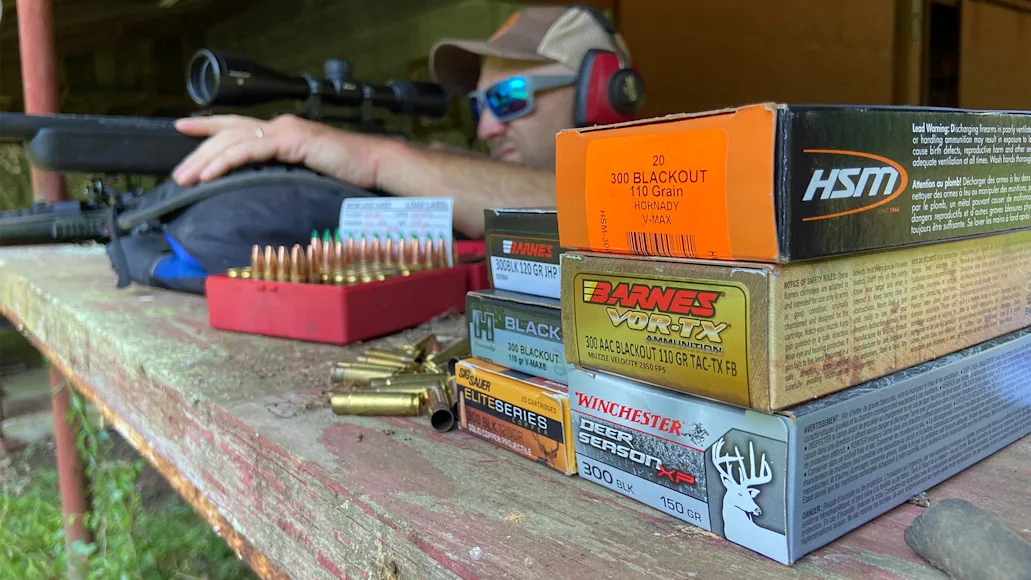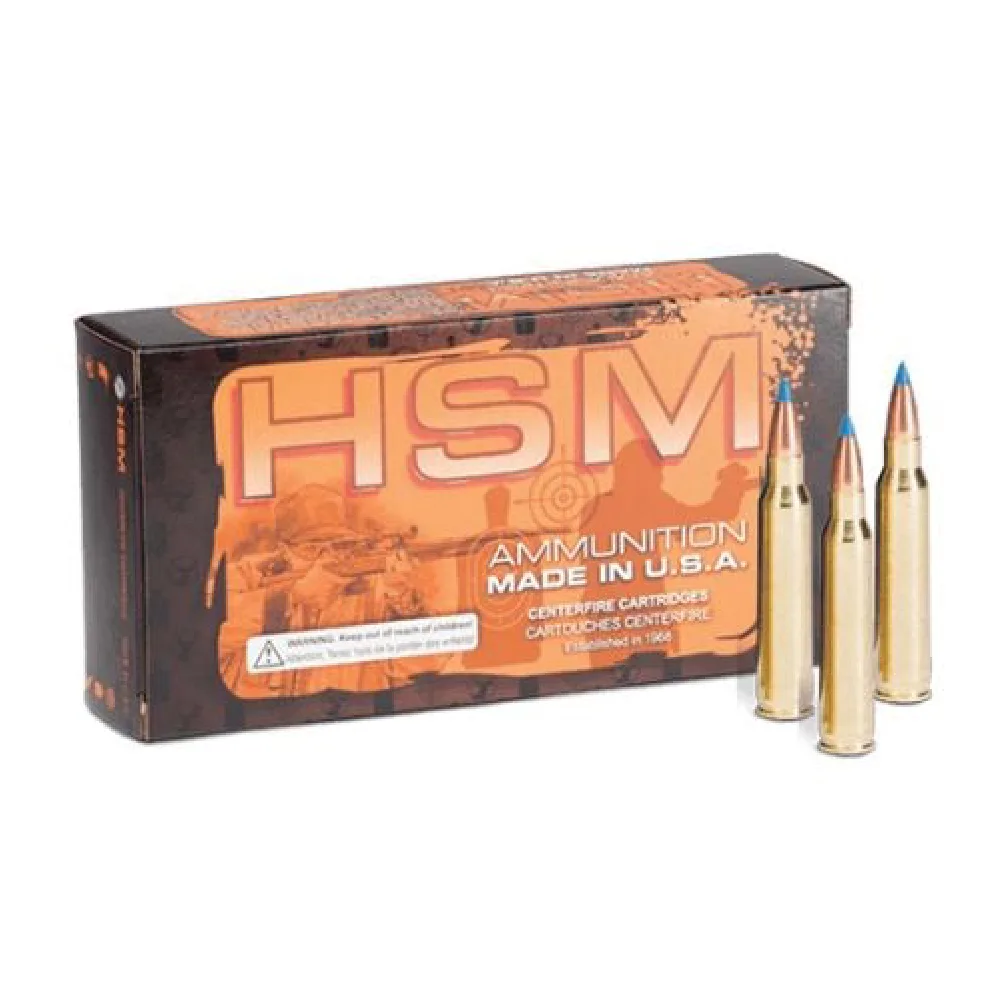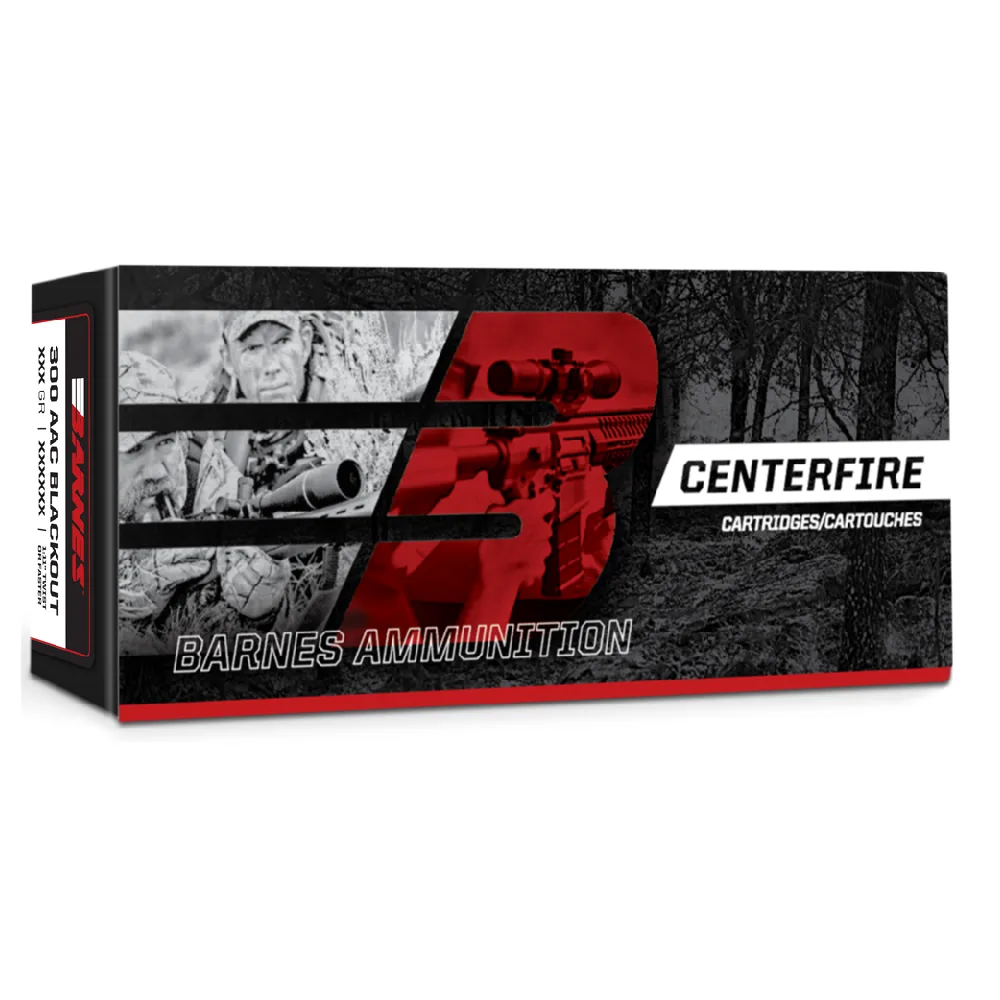We may earn revenue from the products available on this page and participate in affiliate programs. Learn more
Next to the original 5.56mm NATO/223, the 300 AAC Blackout (BLK for short) is the most popular chambering for the AR-15 platform, and, as a result, manufacturers now pump out a wide variety of 300 Blackout ammo. The cartridge was commercially introduced in 2010 by Advanced Armament Corporation, but the cartridge had actually been around since the early 1990s as the 300 Whisper, a wildcat developed by J.D. Jones with SSK Industries.
The Whisper was based on the 221 Fireball case, but most describe the 300 BLK as being a 223 case, necked up to .308 and trimmed. It’s short and stubby, with a bullet that seems too big for the case. But its versatility and performance is surprising. It works in standard 5.56 AR magazines and with AR-15 bolts. All you need to do to change your 5.56 to an 300 BLK is swap barrels, though most shooters opt for a separate upper receiver.
The 300 BLK is intended to be a defensive cartridge, but it serves dual roles. When loaded with 200-or-so-grain bullets moving at about 1,000 feet per second, it is subsonic, with ballistics similar to a .45 ACP handgun, but with a far more aerodynamic bullet. It will reliably cycle AR actions, and as such, suppressed ARs and the 300 BLK go together like corn feeders and Texas. Subsonic factory ammunition abounds for recreational shooting and defensive use.
Still, I think the cartridge is more interesting when it’s loaded with good hunting bullets in the 110- to 150-grain range, traveling to 2,300 fps—similar to the legendary 7.62×39 cartridge chambered in service rifles like the AK-47 and SKS. Those ballistics are said to give it an edge in close-range combat over the 5.56. I can’t speak to that, but I can say they make it a very useful close- to mid-range hunting cartridge. So, I set out to test a variety of loads to determine exactly what makes for the best 300 Blackout ammo in the field?
Best Overall: Barnes VOR-TX 110-Grain TAC-TX FB
Fastest Load: Hornady Black 110-Grain V-Max
Best Heavy Bullet Load: Winchester Deer Season XP
Best Quick Expander: Nosler Ballistic Tip
Hardest Hitting: Sig Sauer Elite Series Copper
Best Value: HSM 110-Grain V-Max
Best Overall: Barnes VOR-TX 110-Grain TAC-TX FB
Specs
110-grain copper, polymer-tipped bullet
2,340 fps velocity
Typically a little over $40 for 20 cartridges
Pros
Tough, all-copper bullet for maximum penetration
Cons
Expensive
This all-copper bullet is the one my son has used the most while hunting, and it’s performed exceptionally well on both whitetails and hogs, including the giant boar Anse is posing with in the photo below (under “What to Consider…) and a whitetail buck he hammered with quartering-to shot at 90 yards. This round was a good performer on the range, too, averaging just under advertised speeds from both rifles. My Mossberg, which likes 110-grain bullets, shoots it especially well, with .75-inch average groups. As an all-around hunting round, especially if you favor penetration over quick-expansion, the one is tough to beat.
Fastest Load: Hornady Black 110-Grain V-Max
Specs
110-grain jacketed lead bullet
Polymer tip
2,400 fps
Right around $30 for 20 cartridges
Pros
High velocity
Great value
Cons
Frangible bullet design impedes penetration
This one was the fastest load I tested, averaging 2,400 fps. It shoots exceptionally well from my Mossberg. The polymer-tipped V-Max is a highly frangible varmint bullet, and not something I’d ever recommend for deer hunting with a .22 centerfire. But it’s a different animal in 300 BLK. Anse killed a nice 8-point buck at 60 yards with this very load last fall, and I was impressed.
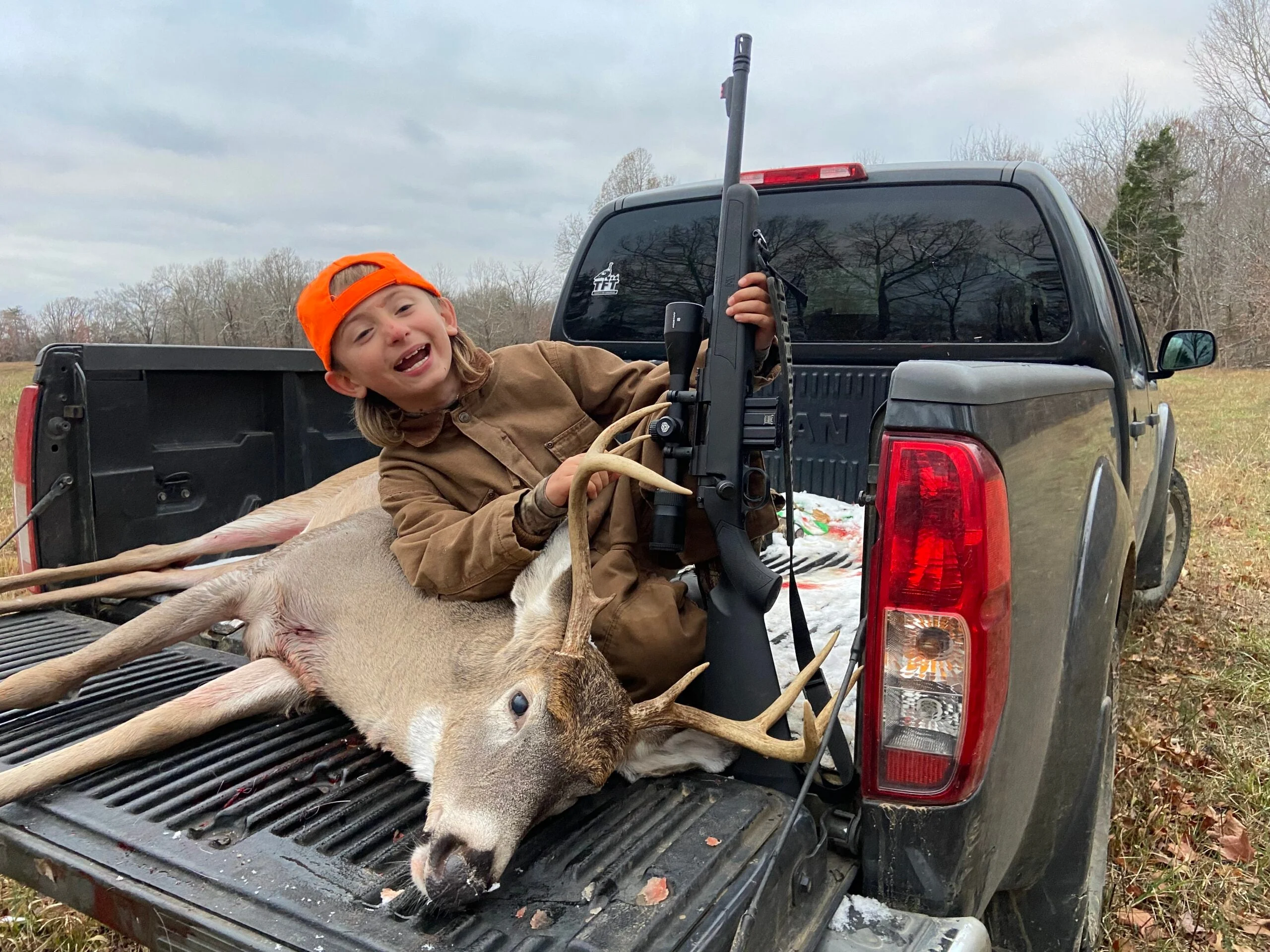
The deer was quartering-to, and Anse hit him on the point of the shoulder. The bullet crushed bone, obliterated the heart and lungs, and created a blood trail that could be seen from space. My niece borrowed the rifle the next day, and she killed another good buck from the same stand, also with a Hornady Black V-Max and one good shot.
Best Heavy Bullet Load: Winchester Deer Season XP
Specs
150-grain jacketed lead bullet
oversized polymer tip
1,950 fps velocity
Typically under $40 per box of 20
Pros
Proven deer bullet design in a heavier weight
Cons
Significantly slower muzzle velocity
The Extreme Point bullet with oversized polymer tip in Winchester’s Deer Season XP is known for violent expansion that puts whitetails down quickly. This one was by far the heaviest bullet I tested in this lineup, at 150 grains, and it averaged 1,950 fps. Previous experience had shown me that my Mossberg doesn’t particularly care for heavy bullets, and that trend held true with the 1.5-inch groups I got with Deer Season XP, but it shot as well as anything else through the AAC Model 7 (a scope on that gun would’ve obviously helped wring out more accuracy potential).
Best Quick Expander: Nosler Ballistic Tip
Specs
125-grain spitzer bullet
Ballistic tip
2,120 fps velocity (handload)
Over $50 for 20
Pros
Proven design in a mid-weight bullet
Cons
Expensive
I wasn’t able to get my hands on these factory loads, but my buddy is an avid handloader and has been whipping up a very similar load for years, using the same 125-grain Nosler Ballistic Tip bullets. His daughter has killed a pile of deer in Tennessee with it and a couple Texas hogs, too, using a suppressed Model 700. Clocked speeds were a consistent 2,120 fps from both of my test rifles (just a little slower than Nosler’s factory specs). All the guns shot this load well enough, if not exceptionally. Like the V-Max, the 125-grain Ballistic Tip has a thin jacket and is built to be frangible, but it holds up pretty well at these lower velocities. My buddy reports exits on whitetails more often than not.
Hardest Hitting: Sig Sauer Elite Series Copper
Specs
120-grain all-copper bullet
2,300 fps velocity
Typically a little less than $40 for 20
Pros
Highest muzzle energy of anything tested (1,419 ft-lbs)
Cons
Moderately expensive
This is another solid-copper bullet option that is 10 grains heavier than the Barnes TAC-TX FB, but almost as fast, averaging 2,300 fps from both rifles. Put those two things together, and you get the highest muzzle energy of any load in the test. The hollowpoint bullet’s geometry and nickel-plated shell casing are optimized for reliable feeding in semi-auto platforms, and the load was accurate across the board. This is one I haven’t hunted with, but will be trying this fall, because everything from the design to my range testing says it will shoot straight, hit hard, and penetrate deeply.
Best Value: HSM 110-Grain V-Max
Specs
110-grain jacketed lead bullet
Polymer tip
2,315 fps velocity
As little as $27 for 20
Pros
Least-expensive ammunition tested
Cons
Not as fast or accurate through the guns we used as Hornady Black with the same bullet
I’ve been seeing HSM ammunition at local gun shops around here recently, and I picked up a couple boxes of 300 BLK loaded with 110-grain V-Maxes last fall. I knew my rifle shot the 110 V-Max bullet well, and I figured they were worth a try for the price. Though these were a little slower and a little less accurate than the same bullets in the Hornady Black series, they nonetheless shot well out of both rifles, and were the least-expensive cartridges I tested. HSM also loads a 125-grain Sierra Pro Hunter that’s worth a look. If you’re on a tight budget, you can save a few bucks with this load and still get solid performance.
Barnes JHP Rifle
Specs
120-grain lead-core hollowpoint
2,175 fps velocity
Typically a little less than $30 for 20
Pros
Classic jacketed hollowpoint bullet
Inexpensive
Cons
Sluggish ballistics compared to the competition
If you’re looking to stockpile some range or general-purpose ammo that’ll do for hunting in a pinch, this lead-core jacketed hollowpoint is a good bet. It shot well across the board, and a good many deer and pigs have been slain with a JHP bullet. Velocity was slow compared to the other 120-grain offering in this lineup—namely, the Sig Sauer Elite Series Copper—but the copper ammo costs a lot more, too.
How We Tested 300 Blackout Hunting Ammo
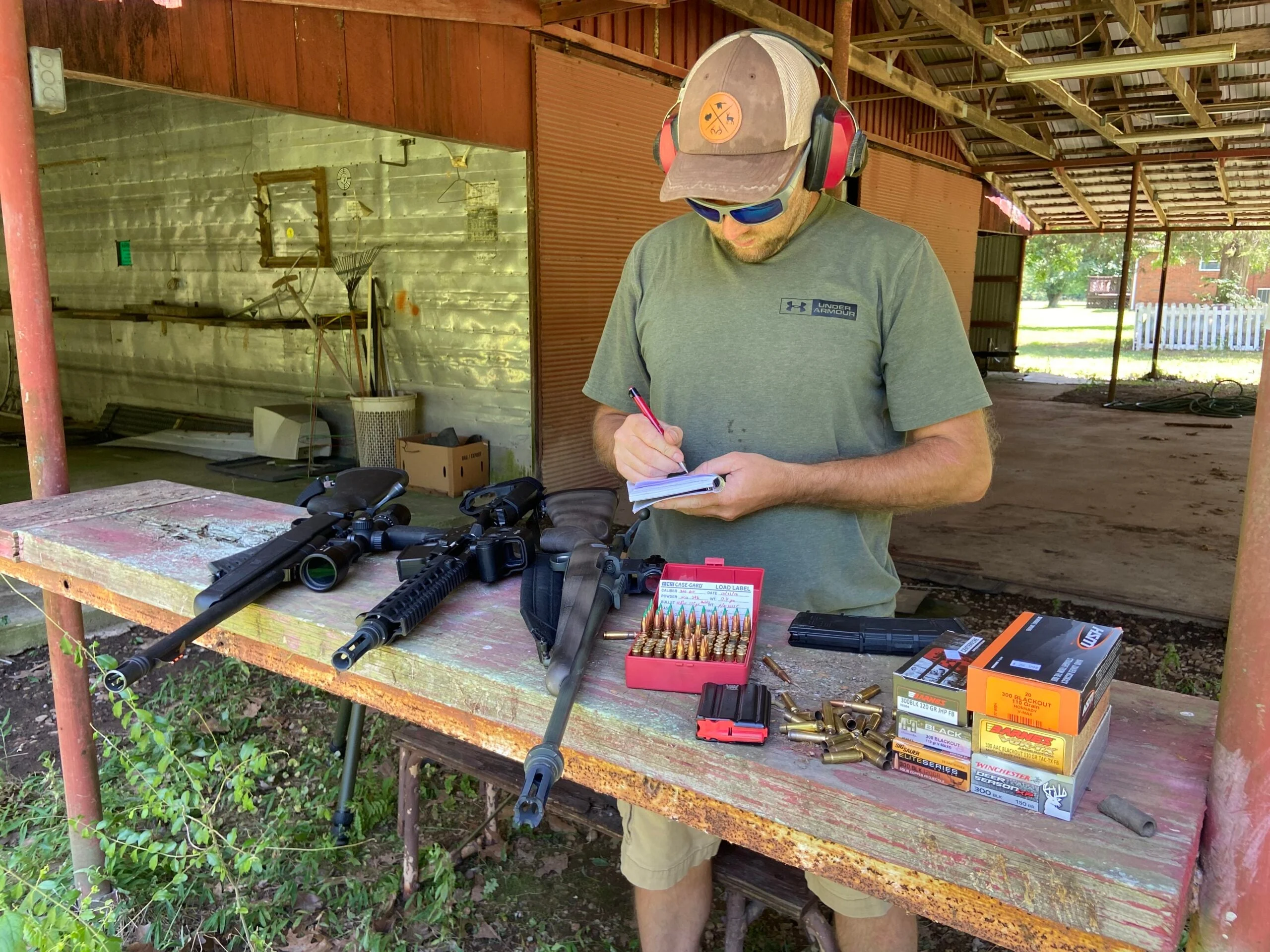
For this test, I went ammo shopping at two local gun shops, a Wal-Mart and a Bass Pro Shop, to make sure I tested what is actually out there on store shelves. I also shot up a bunch of my own stash, all loads that I was already quite familiar with and trust to be good performers based on what I’ve seen on the range and in the woods. I started by chronographing each load through a couple rifles, including my Mossberg MVP Patrol Rifle (16.5-inch) and my buddy’s AAC Model 7 (16.5-inch). Both have a 1:7 twist rate.
I then shot a sampling of 50-yard groups through each gun, not to compare group sizes between guns (my buddy’s gun has a red dot sight, while mine has a 3-9×40 scope), but to look for accuracy trends between them. Here’s what I found.
Things to Consider When Hunting with 300 Blackout Ammo
In a hunting context, the 300 BLK is frequently compared to the .30-30 Winchester, but any glance at a ballistics table shows that to be a stretch. The .30-30 is much more powerful. For hunting purposes, it’s better to just compare the 300 BLK to the 223 because, again, those are the two most popular cartridges chambered in America’s most popular style of rifle. Both are easy to find and relatively inexpensive. Neither was designed for deer hunting, but lots of people hunt deer and other critters with them anyway, and so manufacturers have responded with an assortment of factory-loaded hunting ammunition for both.
I’ve shot several deer with a 223 and have seen plenty of others shot with it. It works, sure, but the 300 BLK works better. The .30-caliber bullets punch bigger holes all the way through whitetails and break bone with no trouble at all. My 9-year-old son, Anse, has been using a 300 BLK the past several seasons in a Mossberg MVP Patrol Rifle, and he’s taken five deer and a couple hogs with it, including a Texas boar that’s still one of the biggest wild pigs I’ve ever seen on the hoof. All shots taken have been between 50 and 100 yards, all have been one-shot kills, and none of those critters have made it more than 50 yards.

Anse’s comfort level with the cartridge puts the spotlight on the 300 BLK’s other great attribute: It recoils only a bit more than a 223, whether it’s chambered in a semi-automatic or bolt-action rifle. Unless you’ve hunted with small kids, you can’t appreciate how delicate the issue of recoil can be. The first question Anse asks when he sits down with a rifle at a shooting bench is, “How much does this gun kick?” With the 300 BLK, the answer is not much. It recoils less than a 30-30. Less than a 6.5 Creedmoor. Even less than a 243. If cartridges were assigned a deer-killing-power-to-lack-of-kick ratio, I’d put the 300 BLK near the top, inside 100 yards (right there with the 350 Legend).

FAQS
Q: What’s so special about the 300 Blackout? Ammo is easy to find and relatively inexpensive. Hunters can use the 300 BLK in AR-15-style rifles and magazines but with significantly heavier and larger-diameter than the .223. Recoil is minimal, making it an ideal hunting cartridge for young shooters. And you can use subsonic ammo with a suppressor to have so much fun at the range that the federal government put a tax and extra laws on it.
Q: How far can you kill a deer with the 300 Blackout? I’ve seen the 300 BLK work wonders at 100 yards, but this is not a long-range hunting cartridge. Keep shots on deer inside 150 yards, and think of 75 yards as the ideal distance.
Q: Will the 300 Blackout kill a bear? Having just returned from a bear hunt in Alberta, I’d have 100-percent confidence using the 300 BLK and a good copper hunting bullet on black bears over bait, where shots are close and controlled. And I’d damn sure choose a compact AR and 30-round magazine full of those copper bullets over a magnum revolver for bear protection, too.
Q: Do you need special magazines for the 300 BLK? No, it will work fine in standard 5.56 magazines. But if you have a 5.56/223 rifle as well as a 300 BLK, it’s a good idea to keep magazines labeled and separated, so you don’t accidentally chamber the wrong round into the wrong gun. That’ll cause problems you don’t want.
Final Thoughts
The 300 Blackout is super-handy hunting cartridge that delivers good accuracy, light recoil, and plenty of punch for game animals inside 150 yards—and you’ve got lots of excellent options for ammo. If you’re after a tougher critter, like a boar hog, you may want to lean toward a deep-penetrating all-copper bullet, and if you’re shooting thin-skinned animals, like a whitetail, a quick- or controlled-expanding option can work well. Either way, you’ll find a load you can count on in the list above. I wasn’t able to get my hands on every good 300 BLK hunting load for this test, but I will—so stay tuned for an updated list of the best 300 Blackout ammo for hunting.
Why Trust Us
For more than 125 years, Field & Stream has been providing readers with honest and authentic coverage of outdoor gear. Our writers and editors eat, sleep, and breathe the outdoors, and that passion comes through in our product reviews. You can count on F&S to keep you up to date on the best new gear. And when we write about a product—whether it’s a bass lure or a backpack—we cover the good and the bad, so you know exactly what to expect before you decide to make a purchase.

